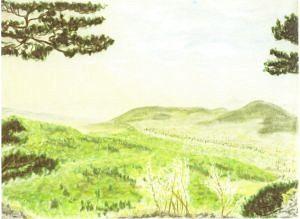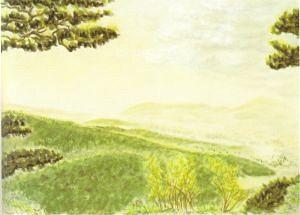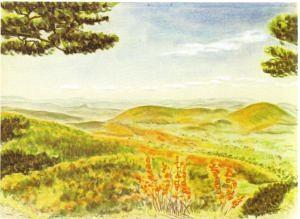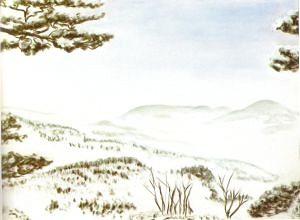
If you wish to understand yourself,
seek yourself in the wideness of the world;
if you wish to understand the world,
seek in the depths of your own mind.
Rudolf Steiner
Tone ether: relationships across time
Attitude
The 'context of phenomena, that is, the relationship between an object and its environment, is not permanent. Rain and sunshine, summer and winter alternate, and the environment changes over the years. Light ether as a mode of observation ends where observation ends and change becomes apparent.
What you see at a particular moment is the outcome of events in the past. Traces of such events are still visible, as the branches and buds on a tree show. As you encounter observations indicating the passage of time, change and development, you enter the sphere of activity of tone ether.
Bockemühl calls this the context of transformation or development, the relationships that become manifest as a result of the periodic development of natural processes. The object reveals how environmental influences have affected it over time and across the seasons.
Tone ether is characterised by the concepts of separating, structuring, creating proportions, and harmonising. The observational attitude that corresponds to tone ether reveals changes and developments in an object's environment. It is generally difficult to see developments if you observe an object continuously. You can notice changes in an object more clearly if you haven't seen it for a while. Like the notes in music, the continuous flow needs to be interrupted; the stages or context of phenomena need to be separated.
These contexts of phenomena have to be examined in sequence in your mind. You structure the images to reveal developmental lines and patterns. Any development will start at a particular point in time and end at some other point. One development may be more decisive for the object you're studying than another: you create proportions. Finally, you can interrelate the changes and developments and see – or rather, listen – how they harmonise, that is, how they fit together as melodies or dissonances. You perceive how the object's environment remains reflected in the object across the years and seasons. Observing the 'context of transformation' requires an inspirational sense of proportion, for instance using your intuition to listen to what the images of past and present have to say.
By examining how various plant species flower in sequence at a particular spot you can observe the 'expression of the earth', and the same can be said of the succession of plant communities in the course of many years.
An example
The peony and the stinking hellebore we saw show the following features: the peony 'talks' about the climax of the year, as its swelling globular bud produces a lush, colourful flower. By contrast, the pale green flower of the hellebore, which sprouts from the innermost parts of the plant in February, 'talks' about the winter season. Because of its striking pale colour amidst the dark green leaves, it has the same kind of effect as the brightly coloured peony flower (Bockemühl, 1985).
Exercises
History
Describe the history of an object's environment. Translate the description into a number of images, which halt the flow of time at characteristic moments. Look for patterns and lines in the history, put them side by side and study their interaction. Create a mental image and try to detect the relationships. Try to listen to the harmony by allowing the images to merge into one another and following the lines and patterns. How do the processes harmonise? Are there any dissonances, that is, disturbances in the development?
Traces of the past
Try to find traces of the past in an object. Try to find out when and how they arose. Try to distil images of what the object and its environment looked like at the time and how what you see now has developed.
one ether separates and connects and creates harmony
Drawings of a landscape in the Jura
n four seasons
(from Bockemühl, 1992)

Spring

Summer

Autumn

Winter
